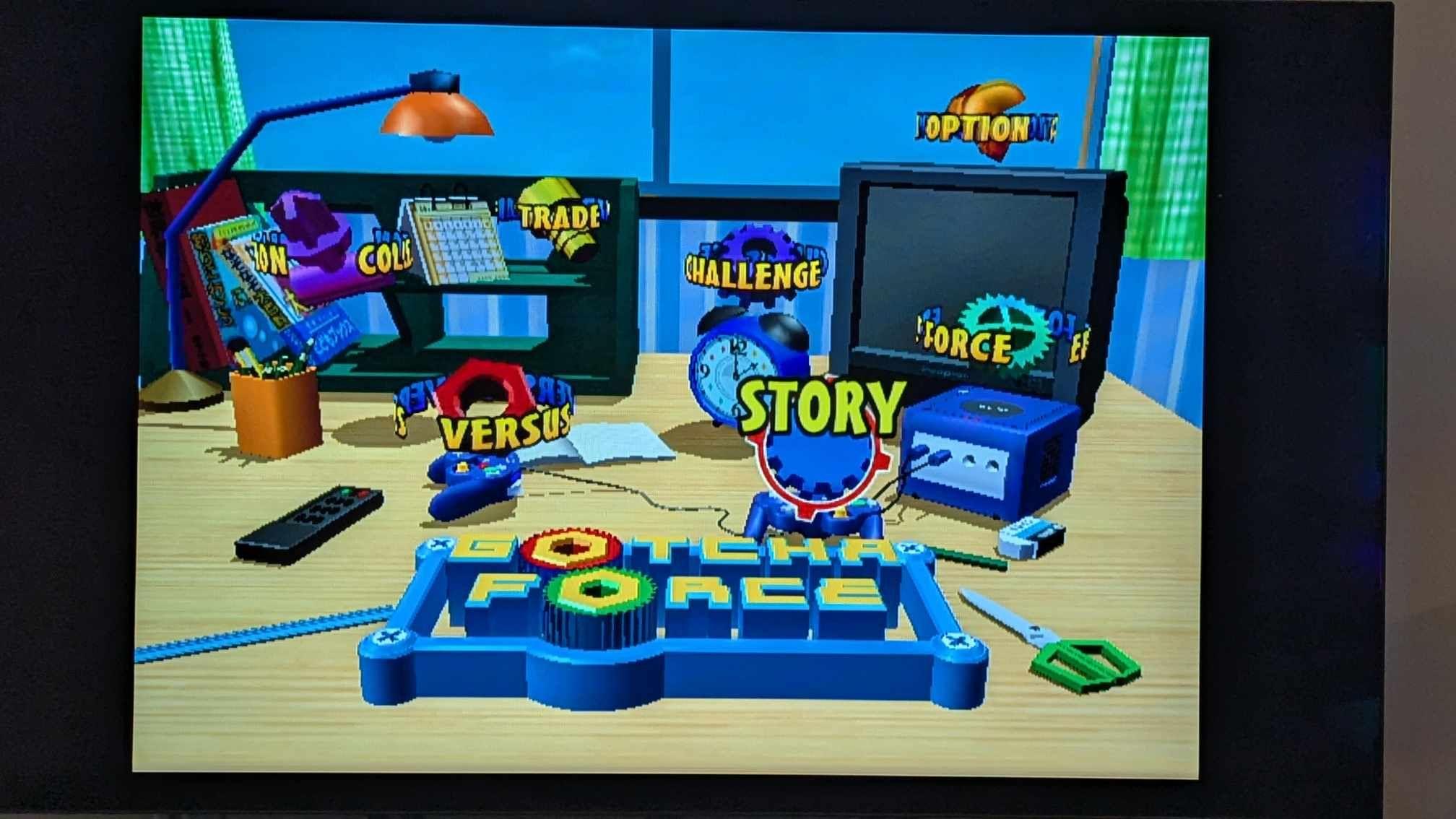OSSC Pro Gamecube/PS2 Jagged edges – Is it just Nostalgia Glasses?
NewHome › Forums › OSSC, OSSC Pro and DExx-vd isl › OSSC – Discussion and support › OSSC Pro Gamecube/PS2 Jagged edges – Is it just Nostalgia Glasses?
- This topic has 7 replies, 3 voices, and was last updated December 1, 2024 at 8:26 PM by
DeadbeatLine.
-
AuthorPosts
-
November 30, 2024 at 3:41 PM #64224
Hello,
I’ve recently acquired an OSSC Pro, and have been using it to play PS2 and Gamecube games (via a Wii) on my 4k LG C1 OLED. The PS2 is connected via RGB SSCRT, and the Wii is connected via component cable (HD Retrovision), with the Wii set to output 480p – I’m then ensuring that 480p is enabled for any Gamecube games that support it.
Currently, I am using the OSSC Pro in scaler mode, framelocked, set to 2880×2160 (50-60Hz), using the 480p DC/PS2/GC preset timings, with some slight scanline and CRT shadow mask enabled. My LG C1 has all post processing options disabled (i.e. no sharpening) and is set to game mode.
As you can see, the edges in the display appear very jagged (I can get other examples if you like) to the point that I find it rather distracting. The jagged-ness is mostly the same on PS2 games. I’ve tried various other output options (1080p, 720p, 480p) and also tried passthrough in line multiplier mode to see if the C1 upscales with less jagged edges than the OSSC Pro, but the result for all settings is pretty much the same. I’ve also tried the full range of the ‘Edge Threshold’ option, but found no discernible difference.
I’ve tried changing the scaler algorithm options – these do make a slight but overall minor difference and tend to make the whole picture blurrier, rather than just softening the edges.
Of course, when I was younger, I used to play these consoles into a CRT, so I understand it won’t look identical and that CRTs have a natural softening, but have I simply forgotten how jagged games from that era used to look, or am I doing anything wrong here? Would you suggest changing anything?

Thanks for your help!
November 30, 2024 at 5:18 PM #64230Yes, it’s largely that things look different. It’s not just nostalgia – it’s that with a scaler like the OSSC Pro the picture reproduces the source so cleanly that it reveals the limited resolution of the source as well as any cheats used by developers to hide it. Since we also tend to use much larger displays now than we did then, the perceived resolution is different.
Finally, CRT displays had a particularly pleasant softness that didn’t feel blurry because of spot size and blooming, something which is hard to emulate. The shape and falloff of the spot belied the limited resolution and made the picture feel sharper than it actually was.
November 30, 2024 at 5:57 PM #64231Thanks for your informative response! I was wondering if a large part of it was just it simply being blown up much larger than it was originally designed for – perhaps I’ll consider getting a smaller screen CRT.
In the meantime, are there any suggestions or settings changes that might improve this? Of course, I’m not expecting a perfect recreation of how I used to view it.
If an anti aliasing feature was to be included in OSSC/OSSC Pro, would this help?
Before I suggest it as a feature, is there a technical reason why it wouldn’t be feasible to include in the software?
December 1, 2024 at 11:37 AM #64247Just to add further to this, how helpful would it be to add something like an mClassic AFTER the OSSC pro? So that the signal path would be Wii/PS2 -> OSSC Pro (outputting 1080p, or 4k if the mClassic supports it without just passing it through) -> mClassic -> TV. I realise there is the potential for some increased lag options here with the dual processing/scaling that is occuring but if its generally not overly noticeable I wouldn’t mind too much for the games I generally play.
December 1, 2024 at 2:57 PM #64249Before you try MClassics etc, have you tried simply using the generic timings rather than the preset ones? You can also try a lower output resolution on the OSSC Pro.
December 1, 2024 at 4:21 PM #64253Admittedly, I’m fairly new to scalers in general, and timings is definitely one of the areas I know least about.
I realise this is likely a dumb question, but if im playing a PS2 or a GC, is there a reason why the PS2 or GC timing preset WOULDN’T be the best choice for minimising jagged edges?
And, likely owing to my lack of knowledge, I’d have thought a purpose built scaler like the OSSC would be better at upscaling than my TV – is there a reason why a lower output resolution on the OSSC and letting the TV do the upscaling would be better for reducing the harsh edges?
Thanks for your suggestion! I’m definitely keen to learn more and understand it all a bit better.
-
This reply was modified 7 months, 3 weeks ago by
DeadbeatLine.
December 1, 2024 at 7:46 PM #64260When it comes to the PS2, games can run in various horizontal resolutions which are pixel repeated in its output. There the optimized timing in the OSSC Pro has to be selected to match the resolution a particular game runs in, which requires either trial and error to find the best match, or looking up if others have already established in which resolution the game runs. If it’s mismatched there will be alternating bands where the picture is sharper and softer.
Using the generic timings the OSSC Pro captures the picture in a much higher resolution, better accommodating the various game resolutions. It’s a tradeoff between convenience and trying to get absolute pixel accuracy in a particular game.
The GC as far as I know doesn’t support the plethora of rendering resolutions the PS2 does, so there the optimized timings may work more broadly across games.
December 1, 2024 at 8:26 PM #64263This is really informative, thank you – this was an area I knew pretty much nothing about so I appreciate the information. I’ll give the generic timings a go and see if it improves it slightly.
Out of curiosity, are timings something that I could try to just play around with and eyeball for a custom timing preset, or is it really more of a case of you need to know what you’re doing if you’re attempting custom settings?
-
This reply was modified 7 months, 3 weeks ago by
-
AuthorPosts
- You must be logged in to reply to this topic.

